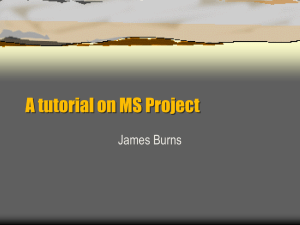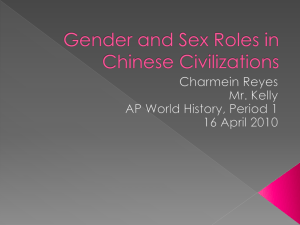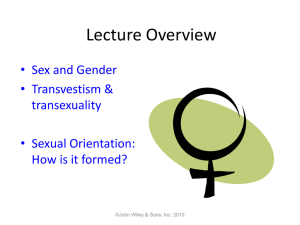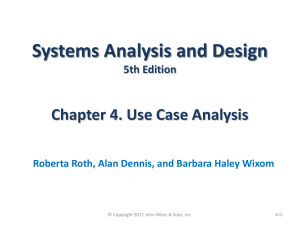Chapter 16
advertisement
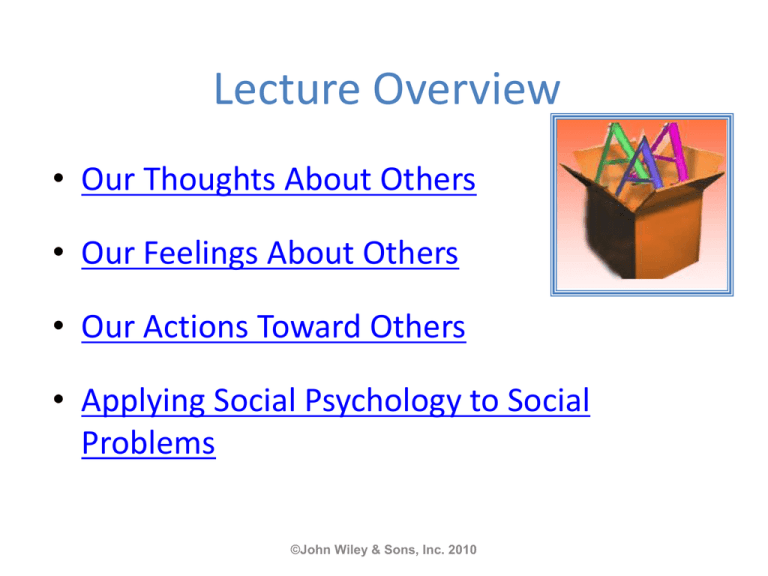
Lecture Overview • Our Thoughts About Others • Our Feelings About Others • Our Actions Toward Others • Applying Social Psychology to Social Problems ©John Wiley & Sons, Inc. 2010 Introductory Definition • Social Psychology: study of how other people influence our thoughts, feelings, & actions ©John Wiley & Sons, Inc. 2010 Social psychology • examines how other persons influence our • Actions include social thoughts, feelings and influence, aggression, and altruism actions – Thoughts include attitudes and attributions – Feelings include attraction and dislike Attitude: • learned predisposition to respond cognitively, affectively, & behaviorally to a particular object ©John Wiley & Sons, Inc. 2010 Attitudes: • Cognitive: what you think • Affective: physiological changes • Behavioral: what you do ©John Wiley & Sons, Inc. 2010 Our Thoughts About Others: Cognitive Dissonance • Cognitive Dissonance: feeling of discomfort created from a mismatch between an attitude & a behavior or between two competing attitudes ©John Wiley & Sons, Inc. 2010 Our Thoughts About Others: Cognitive Dissonance (Continued) ©John Wiley & Sons, Inc. 2010 Our Thoughts About Others: Cognitive Dissonance (Continued) • Festinger & Carlsmith’s Cognitive Dissonance Study. Participants given VERY boring tasks to complete, & then paid either $1 or $20 to tell next participant the task was “very enjoyable” & “fun.” • Result? Those paid $1 experienced greater cognitive dissonance, & therefore changed their attitude more than those paid $20. ©John Wiley & Sons, Inc. 2010 Interpersonal attraction • • • • • • Three Key Factors: Physical Attractiveness Most important, yet culturally influenced Proximity: geographic closeness Similarity: people prefer those who are like themselves ©John Wiley & Sons, Inc. 2010 Interpersonal attraction • People do tend to stick with people as attractive as they : the “matching hypothesis” This works between and within sexes. • Why does this happen? ©John Wiley & Sons, Inc. 2010 Interpersonal attraction • In a normal distribution of people 96% are neither extraordinary good looking nor extraordinarily unattractive. Most people in that 96% do not feel they have settled in choosing their mate. • In fact, most married people rate their spouses as more attractive than themselves . ©John Wiley & Sons, Inc. 2010 Criteria for sexual selection? • Rather consistently, women prefer mates somewhat older, men prefer younger mates. • Women prefer wealthy high-status males • Men prefer younger, attractive women • Any idea why? ©John Wiley & Sons, Inc. 2010 Interpersonal attraction • Proximity: geographic closeness • Logistics • Familiarity • Mere exposure increases liking • Keeping a lasting relationship Similarity: people prefer those who are like themselves So, do opposites attract? Maybe in personality but not in social background or values. ©John Wiley & Sons, Inc. 2010 D • “What is Beautiful is Good”; Dion et al. , 1972 People who are attractive are expected to have better jobs, be nicer people etc. “Halo effect” ©John Wiley & Sons, Inc. 2010 Our Actions Toward Others: Social Influence • Conformity: changing behavior because of real or imagined group pressure • Obedience: following direct commands, usually from an authority figure ©John Wiley & Sons, Inc. 2010 Our Actions Toward Others: Conformity Asch’s Conformity Study • Participants were asked to select the line closest in length to X. • When confederates first gave obviously wrong answers (A or C), more than 1/3 of true subjects conformed & agreed with the incorrect choices. ©John Wiley & Sons, Inc. 2010 Our Actions Toward Others: Conformity (Continued) Why do we conform? • Normative Social Influence: need for approval & acceptance i.e. what are you wearing to the party? • Informational Social Influence: need for information & direction: teach me! • Reference Groups: we conform to people we like & admire because we want to be like©John them Wiley & Sons, Inc. 2010 Our Actions Toward Others: Obedience • Milgram’s obedience study: Participants serving as “teachers” were ordered to continue shocking someone with a known heart condition who is begging to be released. • Result? 65% of “teachers” delivered highest level of shock (450 volts) to the pseudoheart condition “learner.” ©John Wiley & Sons, Inc. 2010 Milgram’s Shock Generator ©John Wiley & Sons, Inc. 2010 Our Actions Toward Others: Obedience (Continued) Four major factors affecting obedience: 1. legitimacy & closeness of the authority figure 2. remoteness of the victim 3. assignment of responsibility 4. modeling/imitation ©John Wiley & Sons, Inc. 2010 ©John Wiley & Sons, Inc. 2010 Our Actions Toward Others: Group Processes • Group membership involves: – Roles: set of behavior patterns connected with particular – social positions – Deindividuation: anonymity leads to reduced inhibition vs self-consciousness, & personal responsibility ©John Wiley & Sons, Inc. 2010 Group Processes: “Power of the Situation” Zimbardo’s Stanford Prison Study • Students were randomly assigned the role of either “prisoner” to play or “guard.” • Original study, scheduled for 2 weeks, was stopped after 6 days due to serious psychological changes in both “prisoners” & “guards.” ©John Wiley & Sons, Inc. 2010 Group Processes: Problems with Decision Making • Group Polarization: group movement toward either a riskier or more conservative decision; result depends on the members’ initial dominant tendency • Groupthink: faulty decision making occurring when a highly cohesive group seeks agreement & avoids inconsistent information ©John Wiley & Sons, Inc. 2010 Our Actions Toward Others: Group Processes (Continued) Symptoms of Groupthink: Illusion of invulnerability Belief in group’s morality Collective rationalizations Stereotypes of out-groups Self-censorship Illusion of unanimity Direct pressure on dissenters ©John Wiley & Sons, Inc. 2010 Our Actions Toward Others: Altruism Why Don’t We Help? • Diffusion of Responsibility: dilution, or diffusion, of personal responsibility • Ambiguity of the Situation: unclear what help is needed ©John Wiley & Sons, Inc. 2010 Latane & Darley’s 5Step Decision Process for Helping ©John Wiley & Sons, Inc. 2010 Our Actions Toward Others: Altruism • How can we increase helping? • Assign responsibility • Reduce ambiguity • Increase societal rewards ©John Wiley & Sons, Inc. 2010 Applying Social Psychology to Social Problems: • 1. 2. 3. 4. How can we reduce destructive obedience? Adjust socialization toward obedience Recognize power of the situation Protect against groupthink Avoid foot-in-the-door technique: making a small request followed by increasingly larger requests 5. Guard against relaxed moral guard 6. Increase disobedient models ©John Wiley & Sons, Inc. 2010




